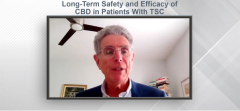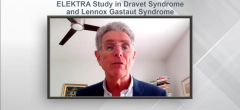
QoL of Cenobamate in Treatment-Resistant Epilepsy
Episodes in this series

Assessing Quality of Life in Epilepsy Inventory-31 (QOLIE-31) scores in treatment-resistant focal onset epilepsy for patients who received cenobamate treatment over 3 to 8 years.
Amit Verma, MD: Cenobamate is a new benzodiazepine sodium-channel, dual-mechanism medication that became available this year. One of the issues with cenobamate is that we have to do a very slow titration. The reason we do that is because there is a risk of somnolence, there was a risk of DRESS [drug reaction with eosinophilia and systemic symptoms] syndrome seen with more rapid titration. The advantage of cenobamate from an efficacy standpoint is that the efficacy data show that significant percentages of patients became seizure-free or had a significant reduction in their seizures during the registration trials. These are patients who had medically intractable seizures.
The purpose of this study was to assess quality-of-life function in patients who received cenobamate over a long period of time. We’re talking about 3 to 8 years of treatment. The authors elected to look at this is because with many other treatment studies, there doesn’t seem to be much improvement in quality of life in the long term. One of the concerns is that maybe the numbers of patients in those studies is low. Needless to say, that’s been a tough thing to prove in patients receiving medications, especially on a long-term basis.
The authors decided to look at their patients at their center. This study was done from Johns Hopkins Hospital. They looked at 49 patients, and a big proportion of those patients had received cenobamate over a course of 3 to 8 years. They found that patients who had a significant reduction in their seizures had significant improvement in their quality-of-life scores. They used a well-documented quality-of-life questionnaire called the QOLIE-31 [Quality of Life in Epilepsy Inventory-31], and that was administered over a period of time to these patients repeatedly.
They found that if patients had a significant reduction in the seizure frequency, they certainly had a significant improvement in their quality-of-life scores. Those quality-of-life scores were correlated to the extent of the improvement in their seizures. If they had a 50% to 75% reduction in the seizures, vs 75% or higher, the patients who had a higher reduction in the frequency of the seizures had a significantly greater improvement in their quality-of-life scores. This shows that it not only impacts their seizure frequency but also certainly can help improve their quality of life as well.
At the end of the day, from a clinical perspective, what is important for these patients is their quality of life. It’s 1 thing to reduce their seizures, but if their quality of life isn’t impacted much, then that doesn’t really help the patients themselves. Knowing that the higher the seizure reduction, the higher the improvement in quality of life, we can make a significant impact on these patients’ lives.
Newsletter
Keep your finger on the pulse of neurology—subscribe to NeurologyLive for expert interviews, new data, and breakthrough treatment updates.














